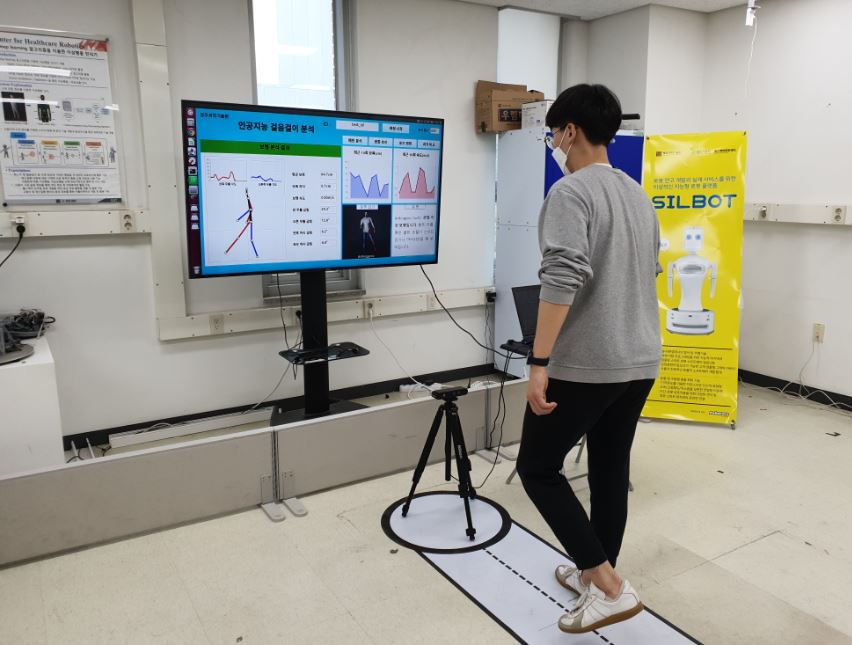Gwangju Institute of Science and Technology (GIST) said researchers at its Healthcare Robot Center have developed a contactless walking analysis system based on artificial intelligence.
The walking analysis system works by using RGB-D sensors to grasp targets' in-depth information by transmitting infrared beam and its reflection time. Using the RGB sensors, it is a practical system that drastically supplemented price and precision, which had been the weaknesses of shoe sensors, floor-pressure sensors, or motion capture systems.
It is an original system, which can classify diseases’ causes and predict changing situations in long-term diseases. The analytic system especially can predict the possibility of falls by the elderly, the developers said.

The research team has accomplished more than 95 percent accuracy for six pathological walkings through deep-learning-based big data analysis. The system works by inputting three-dimensional bone information into Recurrent Neural Networks. The team also attached it to smart robots to develop a state-of-the-art system in which robots can provide autonomous services.
GIST will install the walking analysis system in Kosin University Gospel Hospital in Busan this month. For the next three months, the system will analyze real data of more than 200 abnormal vestibular apparatus patients and orthopedic patients. GIST plans to transfer the technology to related companies after completing the analysis.
“We want to contribute to the healthcare R&D and AI industry projects promoted by Gwangju by additionally installing the walking analysis system in more hospitals,” Professor Kim Moon-sang, who led the team, said.

